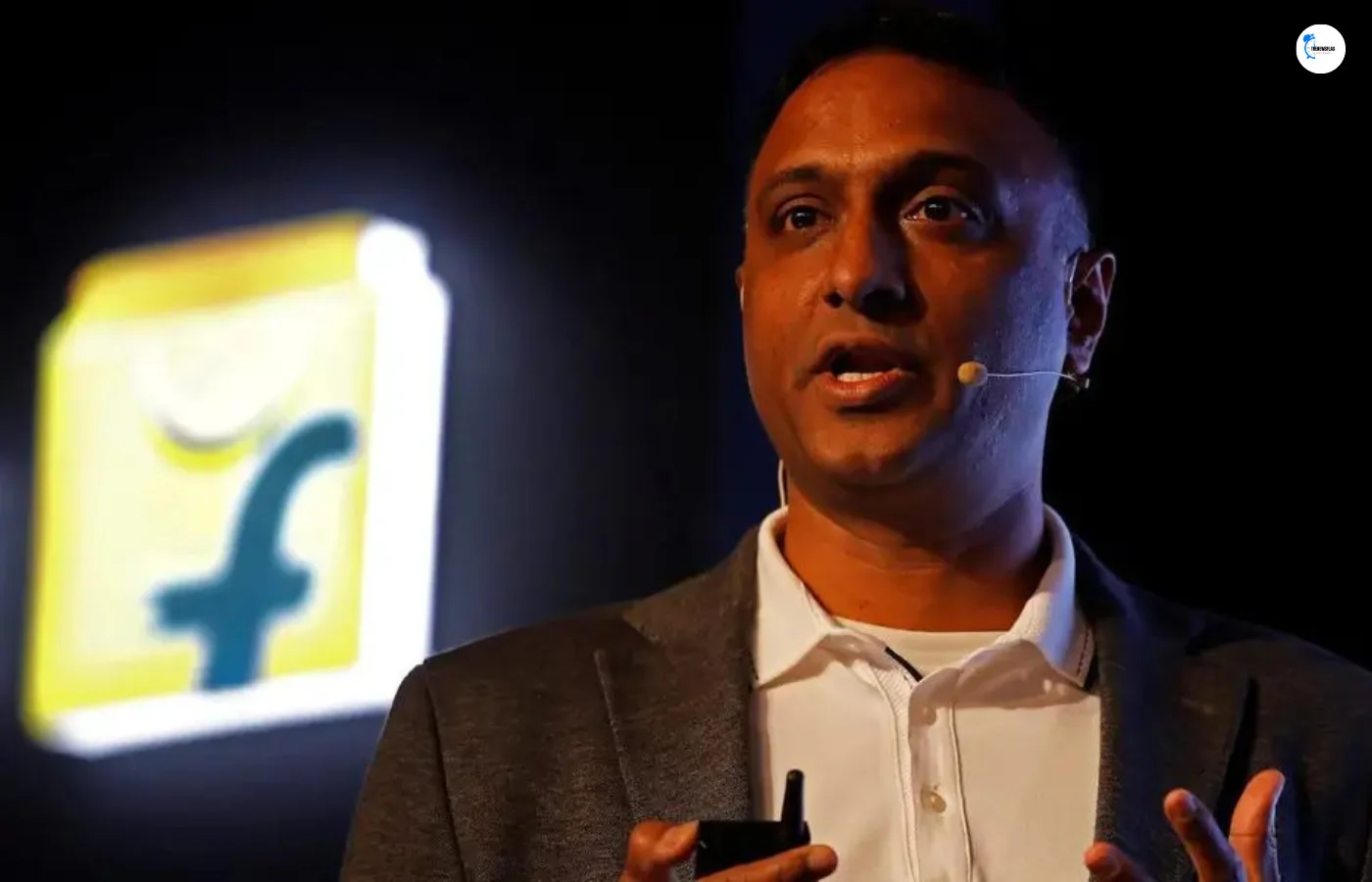Flipkart has a secret weapon to outperform rivals: In a conversation with Shradha Sharma, Kalyan Krishnamurthy, CEO, Flipkart Group, talks about building an influential commerce company of the future.
See Also: First 10 Multibagger Stocks of the year in india: Stocks that will grow in the future 2024
Kalyan Krishnamurthy doesn’t want Flipkart to be a platform for affluent users. He wants its ~600 million users to transact more often on the platform. Even as Flipkart adds payments to its offerings, Kalyan believes it will always be a commerce-first platform. The company will leverage AI to personalize services for users, help sellers reduce costs, and handle logistics effectively.
View this post on Instagram
Flipkart has a secret weapon to outperform rivals
Kalyan Krishnamurthy often says that he has the best job in the world. Leading Flipkart, one of India’s largest e-commerce companies, he has had the privilege of catalyzing the aspirations of over 600 million customers. But he is not just content with that.
Kalyan wants Flipkart to be the platform of choice for everyone, be it a senior citizen from Bihar or a Gen Z customer from Mumbai. To do that, the company has a secret weapon. “Flipkart is for everybody. Whether you know English, whether you have good internet speeds or a sketchy network. If you want to speak to a customer care representative on the phone, we offer that. If you don’t want to talk but just want to chat, we have that, too.
User-Friendly Features of Flipkart
Flipkart is the only app with all these features because we want it to be user-friendly across all age groups, locations, and demographics,” says Kalyan, CEO, Flipkart Group, in conversation with Shradha Sharma.
Being accessible, Kalyan explains, isn’t just restricted to product discovery on the app but also improving last-mile delivery infrastructure, installation services, and open-box delivery. Since Kalyan stepped up to the helm, Flipkart’s numbers bear proof of the accelerated growth trajectory of this home-grown e-commerce behemoth. Currently, the company delivers to 100% of the serviceable pin codes in the country.
As per a report by AllianceBernstein, Flipkart is the largest ecommerce player in India with a gross merchandise value market share of 48%. In addition, the report states that Flipkart continues to grow faster than the industry, primarily led by product categories such as smartphones and apparel. Kalyan credits his employees, the small and medium enterprises (SMEs) selling on the platform, and the regulations by the Indian government for Flipkart’s growth.

See Also: With Bitcoin’s abrupt 7% decline, $660 million is liquidated in a single day.
The ABCD Rule of Flipkart
Learning the ABCD Like all large companies, Flipkart has its own buzzwords that catch the eye: ABCD. It has little to do with the alphabet and more to do with how Flipkart imagines its responsibilities to its customers:
A: Audacity
B: Bias for action
C: Customer-first
D: Diversity
Kalyan adds ‘I for integrity’ to this mix, but ABCD-I doesn’t roll the same way off the tongue. However, Kalyan insists that integrity is the core principle that drives Flipkart. “We do not mandate a particular fulfilment centre to have a 50% women workforce.
It is something that has become a part of the company’s culture. We don’t have to tell this to the leaders, we don’t have to preach this everywhere,” he explains. Kalyan says collaborative decision-making is what has kept the e-commerce major at the top of the GMV charts.
For example, Flipkart invites ideas from all employees on what to build next. From the 140-150 ideas that are received, around 40-50 are selected. These scaled-up programs are driving Flipkart’s loyalty. But that’s one part of the puzzle. Today, Flipkart has 600 million users across India. But not all of them are active users. Kalyan wants to change this metric.
“We have around 600 million users, but the monthly customer base is a much smaller number. We want to bridge the gap between the monthly customer base and the 600 million user base,” he says.
Kalyan believes Flipkart will achieve that goal–to grow the monthly customer base by 2-3X–over the next two to three years. In addition, the company is also developing consistent and sustainable entry funnels to get users to the platform.
For instance, payments form a high-volume, repeat transaction category, especially with the popularity of the unified payments interface (UPI). Kalyan explains that since millions of transactions pass through Flipkart, it was necessary to add UPI to the dynamic. Just a few weeks ago, Flipkart launched its UPI services in partnership with Axis Bank.
Another advantage of payments, says Kalyan, is that it is a high-frequency business, unlike e-commerce. Hence, it is a good entry point to get users on the platform.
“We want people to come into Flipkart through payments, but again not by becoming a payments company. When the users come in, we obviously want them to do more commerce, something that is our core business,” adds Kalyan.
Having said that, Flipkart does dabble in financial services through installments for high-value electronic purchases. However, these offerings are powered by regulated financial institutions. It is the marketplace model that has worked well, and Kalyan clarifies that Flipkart has no plans to enter the regulated BFSI industry. However, he reiterates that, even a decade later, Flipkart will continue to be an e-commerce company.
See Also: “Waifus” is brought to life via an AI-powered game with plans for an AR/VR experience.
“We have 20,000+ employees in our supply chain, and we roughly have 2,50,000 to 3,00,000 people directly related to our supply chain. So be it five years from now or a decade later, we will still be a commerce company. But we want to be an influential commerce company,” he adds.
Even as Flipkart aspires to become an influential commerce company, Kalyan says that its mission is to improve access and affordability of its products. “How do we give access to good quality products to the length and breadth of the country and make it affordable?
This is what Flipkart wanted to do, and this is what it is doing. And I think that we are still maybe 2 out of 10. We are scratching the surface, and there is so much more to do on access and affordability,” he adds. The pillars of the consumer wave India has braced past the outdated notions of being a spendthrift nation and a nation of savers. The Indian consumer is aspirational, seeks better quality products, and looks for a wide variety of options.
Kalyan believes Flipkart is just a platform. The real changemakers are the SMEs who offer the products that customers seek. “Today we have around 250 million product listings from SME sellers. This is the scale of selection and variety we offer to our ~600 million users, meaning the consumerism is being brought in by these SME sellers,” he says. Kalyan also quickly points out the pivotal role of the Indian government in building an enabling environment for small businesses and entrepreneurs to thrive.
“The time taken for movement of goods from one part of the country to the other has gone down by 40% over the past five years. The cost structure of logistics has gone down by 50%. And the Indian government has entirely enabled all of this,” he says.
Flipkart has a secret weapon to outperform rivals: Disruptors such as artificial intelligence can become enablers too. Kalyan admits that Flipkart will leverage AI to personalise services for users, help sellers reduce costs, and handle logistics effectively. These enablers serve as a nudge for Flipkart to stay ahead of the game. There is paranoia on one hand and excitement on the other. Kalyan is thrilled about his “generational cool job”. That’s what keeps him going.





